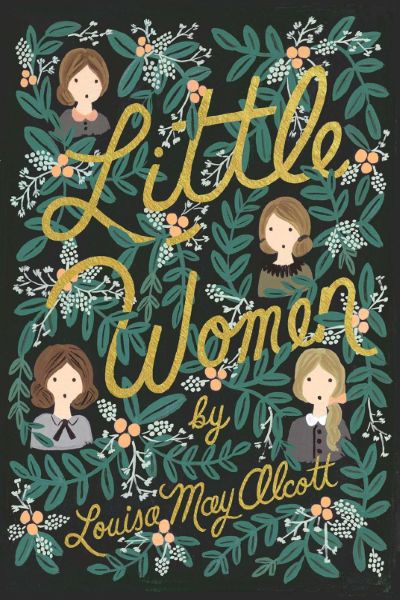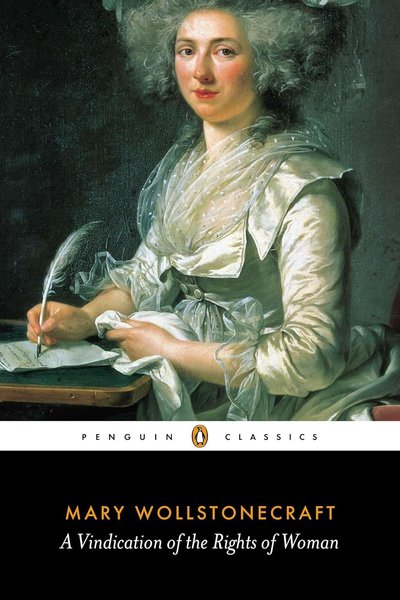Little Women
A classic coming-of-age novel that, through the growth journey of the four March sisters, showcases diverse life choices for 19th-century women, influencing generations of female readers' values and life pursuits.

📝 Book Review
In the brilliant constellation of 19th-century American literature, Louisa May Alcott’s “Little Women” shines like a warm and enduring star, illuminating countless female readers’ hearts with its unique radiance. This classic novel, first published in 1868, though born before the rise of the feminist movement, became an indispensable work in women’s literary history through its profound portrayal of diverse life choices for women. Through the growth journey of the four March sisters—Meg, Jo, Beth, and Amy—Alcott presents readers with a rich and colorful picture of women’s lives, influencing generations of women’s thinking about their own value and life paths.
Born in 1832 and passing in 1888, Alcott’s life experiences were closely related to her work’s themes. As the daughter of transcendentalist philosopher Bronson Alcott, she was exposed to progressive educational concepts and social thought from an early age. Family financial difficulties made her take on the responsibility of supporting the family early, an experience that shaped her profound understanding of the importance of women’s economic independence. She herself remained unmarried throughout her life, dedicating herself to her writing career—a life choice that was extremely rare at the time, reflecting her questioning and transcendence of traditional women’s roles.
Historical Context and Social Significance
The creative background of “Little Women” holds profound social significance. The America of the 1860s was in the midst of the Civil War, with social structures undergoing dramatic changes and traditional gender roles and family patterns facing challenges. Alcott keenly captured this era’s transformation, reflecting the living conditions and values of American middle-class families of the time through the March family’s story. The father’s military service made Mrs. March the de facto head of the household, a situation that held typical significance, reflecting the expansion of women’s roles during wartime.
The novel’s greatest achievement lies in creating four distinctive female characters with distinct personalities. The eldest daughter Meg represents the traditional feminine ideal—gentle and virtuous, family-centered—her life choices embodying 19th-century mainstream society’s expectations for women’s roles. However, Alcott doesn’t simply praise or criticize this choice but deeply explores Meg’s balance between family responsibilities and personal desires, demonstrating the complexity and value of traditional women’s roles.
Jo March: Revolutionary Character and Literary Ambition
The second daughter Jo is undoubtedly the most revolutionary character in the novel. Her passion for writing, desire for independence, and rebellion against traditional women’s roles make her one of the most influential figures in early feminist literature. Jo’s image breaks the stereotypes of female characters in contemporary literary works—she is not satisfied with the traditional path of marriage and family but pursues artistic creation and personal achievement.
Through Jo’s experiences, Alcott explores the challenges and difficulties faced by women artists, including contradictions between social expectations, economic pressures, and creative freedom. Jo’s struggle to be taken seriously as a writer, her financial necessity to write sensational stories while aspiring to create meaningful literature, and her eventual choice between literary independence and romantic love all reflect the complex choices facing creative women in the 19th century.
Jo’s character was groundbreaking in its refusal to conform to the “cult of true womanhood” that dominated 19th-century American society. Her tomboyish behavior, intellectual ambitions, and initial rejection of marriage challenged conventional feminine ideals and provided young female readers with an alternative model of womanhood.
The Complexity of Female Characters
The third daughter Beth, though relatively fragile, embodies another kind of feminine strength—kindness, dedication, and spiritual resilience. Her love of music and selfless devotion to family demonstrate the richness of women’s inner spiritual worlds. Beth’s early death is not only a turning point in the story but also symbolizes the fragility of pure ideals in the real world, adding depth and realistic significance to the novel.
The youngest daughter Amy’s growth process is the most complex. She develops from a willful, self-centered little girl into an elegant, independent young woman. Her pursuit of art, yearning for a beautiful life, and understanding of love all reflect the multiple contradictions and choices in women’s growth processes. Amy’s eventual union with Laurie is not only a personal emotional destination but also reflects women’s balance between pursuing personal happiness and social status.
Alcott’s portrayal of Amy is particularly nuanced in showing how a woman’s artistic ambitions can coexist with romantic desires and social aspirations. Amy’s realization that she will never be a great artist leads not to despair but to a mature understanding of her talents and a redirection toward supporting art and artists.
Maternal Wisdom and Education
Alcott’s portrayal of mother-daughter relationships is especially profound. Mrs. March is not only the mother of four daughters but also their spiritual mentor and life role model. She independently supports the family while her husband serves in the war, maintaining strength and optimism in the face of difficulties, setting an example of women’s resilient character for her daughters.
Her education of her daughters is not simple moral preaching but the transmission of values through daily life’s details—this educational approach reflects the uniqueness of feminine wisdom. Mrs. March’s “Pilgrim’s Progress” allegory, her gentle guidance through moral crises, and her modeling of selfless service all demonstrate how women could exercise intellectual and moral authority within domestic spheres.
The novel’s exploration of different educational philosophies through the March parents also reflects broader 19th-century debates about women’s education and moral development.
Sisterhood and Female Relationships
The novel’s portrayal of friendship and sisterhood is equally significant. The four sisters experience both competition and conflict as well as understanding and support—this complex relationship reflects the true state within women’s groups. Alcott doesn’t idealize sisterly relationships but honestly presents how women can experience both jealousy and misunderstanding as well as form deep emotional bonds.
This portrayal provided important reference points for later women’s literature, demonstrating that female relationships could be complex and multifaceted rather than simply supportive or competitive. The sisters’ different temperaments and resulting conflicts feel authentic and help readers understand the natural dynamics of family relationships.
Economic Themes and Class Analysis
“Little Women’s” exploration of wealth disparities and class issues also holds social critical significance. The March family, though economically struggling, is spiritually rich, forming a sharp contrast with families who are materially wealthy but spiritually impoverished. Through this contrast, Alcott questions contemporary society’s definitions of success and value, proposing a value system based on character and spiritual pursuits rather than material wealth.
The novel’s treatment of economic necessity versus moral principle appears throughout the sisters’ various choices. Jo’s willingness to write sensational stories to support her family, Amy’s temporary consideration of marrying for financial security, and Meg’s struggles with domestic economy all reflect the practical economic pressures facing women of the middle class.
Artistic Creation and Women’s Creative Struggles
In terms of artistic creation themes, the novel deeply explores the situation of women artists through Jo’s writing experiences and Amy’s painting pursuits. Alcott demonstrates the various obstacles women face when pursuing artistic ideals, including social prejudice, economic limitations, and conflicts with family responsibilities. This exploration provides important perspectives for understanding 19th-century women artists’ predicaments.
The novel’s treatment of Jo’s literary ambitions is particularly sophisticated, showing both the potential for women’s creative achievement and the institutional barriers they faced. Jo’s eventual marriage to Professor Bhaer and their establishment of a school represents a compromise between personal artistic ambition and social expectations, yet it also provides her with meaningful work in education.
Narrative Style and Literary Innovation
The novel’s narrative style is warm yet realistic. Alcott employs delicate psychological descriptions and vivid daily life scenes to create a literary world that is both idealized and realistically credible. Her language is suitable for young readers while possessing sufficient depth for adult contemplation—this balance makes “Little Women” a true cross-generational classic.
Alcott’s narrative technique includes innovative elements such as the integration of allegorical elements (particularly the “Pilgrim’s Progress” framework), the use of letters and theatrical performances within the narrative, and the realistic portrayal of domestic life that elevated everyday experiences to literary significance.
Influence on Women’s Literature
“Little Women” has had profound influence on later women’s literature. It established important creative patterns for female coming-of-age novels, influencing numerous subsequent works from “Anne of Green Gables” to contemporary young adult literature. The novel’s affirmation of diverse life choices for women provided a literary foundation for the development of 20th-century feminist thought.
The work’s influence extends beyond literature to popular culture, with countless adaptations, reinterpretations, and references in film, television, theater, and other media continuing to introduce new generations to Alcott’s vision of female possibility and agency.
Educational Impact and Moral Development
In terms of educational significance, “Little Women” has long been considered important reading for girls’ education. The values it conveys—industry, kindness, independence, and pursuit of ideals—have had positive influences on the character formation of generations of women. Simultaneously, the novel provides male readers with a window into understanding women’s inner worlds.
The novel’s moral framework, while rooted in 19th-century Christian values, presents universal themes about personal growth, family loyalty, and the importance of maintaining integrity in the face of social pressures.
Cross-Cultural Reception and Global Influence
The work’s dissemination and reception in different cultural contexts is also interesting. In China, the translation and introduction of “Little Women” echoed with the women’s awakening movement of the early 20th century, providing Chinese women with new life references. Many Chinese women writers and intellectuals were influenced by this work.
The novel’s themes of family loyalty, personal ambition, and moral development have resonated across cultures, making it a truly global work that speaks to universal human experiences while remaining rooted in its specific historical and cultural context.
Modern Feminist Criticism and Reinterpretation
Modern feminist criticism’s reinterpretation of “Little Women” is also important. Although some value concepts in the novel may seem conservative today, its recognition of women’s diversity and praise for women’s independent spirit still hold progressive significance. Modern readers can understand this work from a historical perspective, recognizing its innovative significance at the time.
Contemporary feminist scholars have noted both the novel’s limitations (such as its ultimate privileging of domestic roles for most of the sisters) and its revolutionary elements (particularly in Jo’s characterization and the general validation of women’s intellectual and creative capabilities).
Contemporary Relevance and Continuing Legacy
Today, “Little Women” remains an important classic of women’s literature. It reminds us that women’s value should not be defined by single standards—every woman has the right to choose the life path that suits her. Whether choosing family, career, art, or other paths, the key is being true to one’s heart and pursuing one’s ideals.
In the current context where gender equality still faces challenges, rereading this classic work reveals that Alcott’s wisdom still shines brightly. Her recognition of women’s diversity and praise for independent spirit continue to inspire new generations of female readers to courageously pursue their life ideals.
The novel’s enduring popularity demonstrates its successful integration of entertainment with moral instruction, domestic realism with transcendent idealism, and individual growth with social commentary. “Little Women” remains a powerful testament to the complexity of women’s lives and the importance of recognizing multiple paths to fulfillment and meaning.
Conclusion: Timeless Themes and Evolving Interpretations
“Little Women” endures because it captures essential truths about human growth, family relationships, and the struggle to maintain personal integrity while meeting social expectations. While specific social conditions have changed dramatically since Alcott’s time, the fundamental questions the novel explores—How do we balance personal ambition with family obligations? How do we maintain our values while achieving economic security? How do we form meaningful relationships while pursuing individual goals?—remain as relevant today as they were in 1868.
The March sisters’ different paths through life continue to offer readers a range of possibilities for female identity and achievement, demonstrating that there is no single “right” way to be a woman. This message of acceptance for diverse choices and celebration of individual strengths makes “Little Women” not merely a historical artifact but a living text that continues to inspire and guide readers toward their own authentic paths in life.
Discussion
读书讨论
分享您对这本书的感想和看法,与其他读者交流见解
加入讨论
分享您对这本书的感想和看法,与其他读者交流见解
加载评论中...
Book Info
🛒 Get This Book
 Buy on Amazon
Buy on Amazon Related Books
读书讨论
分享您对这本书的感想和看法,与其他读者交流见解
加入讨论
分享您对这本书的感想和看法,与其他读者交流见解
加载评论中...

